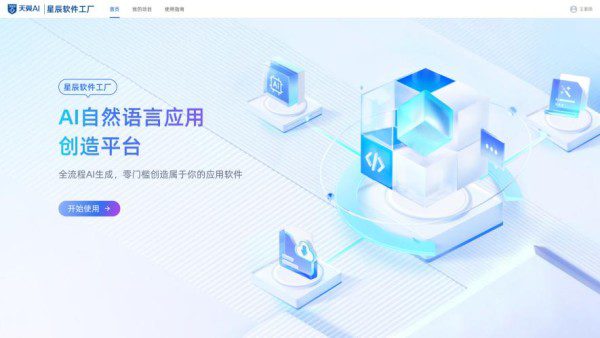- China Telecom, in collaboration with TeleAI, introduces the XINGCHEN Large Model – Software Factory.
- The platform leverages a documentation-oriented approach driven by a multimodal large model.
- It streamlines software development by automating code generation from natural language documentation.
- Features include automated testing, debugging, and one-click deployment for efficient project management.
- Introduces “code primitives” for enhanced code maintainability and robustness.
- Promotes collaborative development by simplifying the software development process.
Main AI News:
China Telecom AI Technology Co., Ltd., in collaboration with the Institute of Artificial Intelligence (TeleAI), has introduced the XINGCHEN Large Model – Software Factory, marking a significant advancement in the realm of software development. This innovative platform leverages a groundbreaking documentation-oriented approach driven by a multimodal large model, fundamentally reshaping conventional software development workflows.
Traditionally, software development has centered on two critical phases: requirement analysis and functionality implementation. The former typically involves natural language product documentation that often lacks direct applicability to coding, while the latter focuses on the intricate task of writing machine-understandable code. This dichotomy has often posed challenges in bridging the gap between conceptualizing software needs and actualizing them efficiently.
The XINGCHEN Software Factory addresses these challenges by championing a documentation-oriented paradigm. Here, developers concentrate solely on crafting clear and comprehensive product documentation, leaving the intricacies of coding to advanced large models. This shift is underpinned by automated testing and deployment capabilities, ensuring streamlined development cycles and expedited project launches.
“At its core, the XINGCHEN Software Factory introduces a novel framework for automated software development, powered by large multimodal models,” explains TeleAI researchers. This framework consolidates diverse software development requirements—front-end, back-end, UI design, and more—into unified documentation. This documentation then serves as the blueprint for generating code through intuitive step-by-step prompts, supported by automated debugging and testing functionalities, culminating in seamless project deployment.
Central to its operation are three core capabilities: process innovation, controlled code generation, and enhanced interaction modes. By minimizing traditional coding complexities, the platform fosters collaborative software development across teams, regardless of individual programming proficiency. This document-centered approach not only enhances efficiency but also promotes a more inclusive development environment.
Moreover, the XINGCHEN Software Factory introduces the concept of “code primitives,” essential functional snippets derived from extensive project repositories. This strategy enhances code maintainability and robustness, overcoming typical challenges associated with large model-driven code generation.
“The introduction of code primitives marks a pivotal advancement in generating well-organized, business-specific codes,” notes TeleAI. Furthermore, the platform’s innovative interaction schema mirrors conventional software development workflows, eliminating the need for extensive user-LMM interactions and focusing instead on direct documentation-to-project realization.
China Telecom’s strategic investment in large multimodal models signifies a robust commitment to advancing AI applications across various sectors. With a formidable R&D team and a comprehensive data pool, China Telecom is poised to revolutionize software engineering by integrating cutting-edge AI technologies into practical industrial solutions.
Conclusion:
China Telecom’s launch of the XINGCHEN Large Model – Software Factory marks a significant advancement in software development methodologies. By integrating AI-powered, documentation-oriented workflows, the platform not only enhances development efficiency but also sets a new standard for collaborative and inclusive software engineering practices. This innovation is poised to reshape the software development market by democratizing access to sophisticated coding capabilities and accelerating project timelines.

